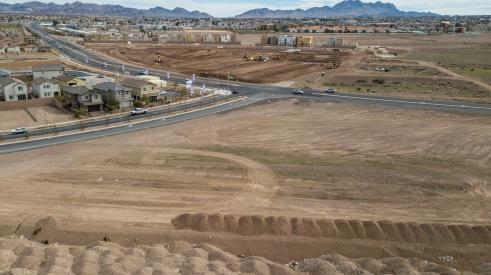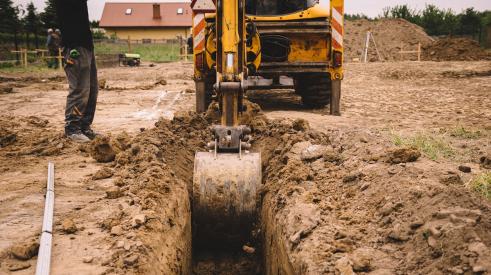New federal storm-water regulations threaten to send thousands of home building projects in 13 states into regulatory limbo through no fault of builders or developers who operate the sites. On March 10, Environmental Protection Agency Phase II storm-water regulations governing projects from 1 to 5 acres became enforceable. At the same time, many states missed a deadline to finalize their minimum guidelines approved by the EPA. NAHB water and wetlands policy analyst Amy Ericksen says builders in those states are technically in violation of the new law because they lack state guidelines to follow.
The threat of federal enforcement for developers who do not meet Phase II requirements in those states appears low, says Ericksen. But the potential danger comes from interest groups that oppose individual projects and can latch on to these technical violations as a basis for lawsuits designed to slow or stop development.
"We are recommending that builders follow a series of procedures to cover themselves as they wait for further information," Ericksen says. "Our concern is that any builders in these states could be found in violation of the Clean Water Act, and they need to limit their exposure."
The NAHB advises builders who develop an acre or more of land in Arkansas, Connecticut, Georgia, Indiana, Massachusetts, Minnesota, Nebraska, New Jersey, Rhode Island, Vermont, Washington, Wisconsin and Wyoming to file Phase I paperwork regarding the guidelines as a way to cover their development activities.
Builders with whom PB spoke were, for the most part, unsure of the changes' impact. Some, such as Mike Schiltz, president of Family Pryde Homes in Bellevue, Wash., "rely heavily" on engineering consultants' advice. Engineers do see the exposure.
"This period of transition makes a lot of people nervous," says David Felstuel, a senior environmental consultant with AMEC Earth & Environmental in Vancouver, Wash., which has several builder/developer clients. "The official state-level permitting information is not in place, and at the same time, you are exposed. In this case, it's better to be prudent."
Key Documents
For years, developers of parcels larger than 5 acres complied with Phase I of the National Pollutant Discharge Elimination System permitting program by preparing and filing two key documents for each development. The first, a notice of intent (NOI), is primarily a description of the property and the project to be built. The second, a detailed plan for limiting pollutants in storm-water runoff, is a storm-water pollution prevention plan (SWPPP). Builders operating in states without Phase II guidelines should show a good-faith effort to meet the new federal regulations by following the same guidelines established in those states for Phase I projects, NAHB experts say.
After completing and filing NOIs and SWPPPs for each development of an acre or more, builders should meet Phase I inspection schedules, says NAHB environmental policy analyst Marolyn Parsons. Typically this requires inspections every 14 days during the build-out of the project and after each rain event of a half-inch or more.
The EPA has published a state-by-state informational document to help builders and developers comply with new storm-water regulations. Other NAHB storm-water compliance documents can be found at www.HousingZone.com/stormwater.
In April, the NAHB filed its best estimate of the cost of complying with storm-water regulations, specifically the preparation of the notice of intent (NOI) and the storm-water pollution prevention plan (SWPPP). The results of an informal survey of NAHB members in several states found that costs of hiring outside consultants far exceed the estimate originally put forth by the Environmental Protection Agency.
Advertisement
Related Stories
Land Planning
Helena Habitat for Humanity Aims to Build 1,000 Affordable Homes
A new Habitat for Humanity project in Helena, Mont., aims to deliver 1,000 affordable housing units and outdoor community amenities
Government + Policy
How Eminent Domain May Be Used to Respond to Climate Crises
Eminent domain, which grants the government power to take private property for public use, has displaced thousands of Americans for the sake of infrastructure in the past, but it may be used for a better purpose in a global climate crisis
Q+A
Soil Connect Is Moving Dirt and Building Relationships
Cliff Fetner created Soil Connect so builders and developers could more easily move dirt and other aggregates from jobsite to jobsite, but it has expanded to become something much more






